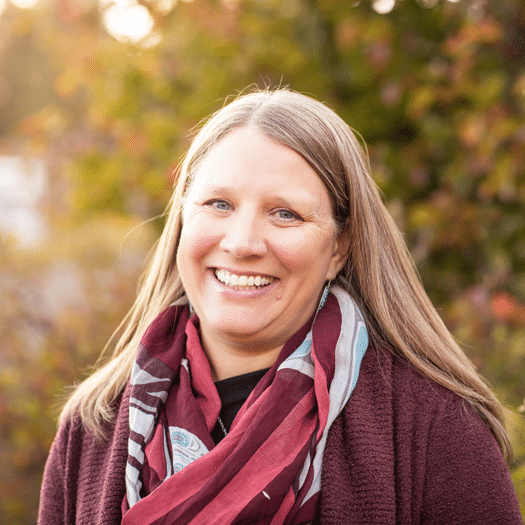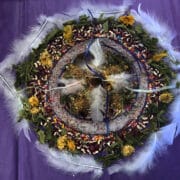How to: Prayers for the Directions
In an earlier post on “Calling the Directions & The Medicine Wheel” I shared a definition of medicine wheels, how to move about the wheel, and associations with the directions on the wheel. In this post, I share with you methods for composing a prayer to call in the directions.
The Nature of Prayer
Prayers are peculiar things that can take on any nature. Just because we call something a “prayer” does not make it sacred. The ego can compose self-involved pleas to a Higher Power. Many people choose not to pray because they’ve become frustrated with petition and gratitude prayers. Others grow weary of prescribed prayers (such as the Hail Mary or Lord’s Prayer) that can lose their spark over time.
So, how do we say sacred prayers that foster connection? How do we avoid the dry wishlist and rote repetition? Practice composing our own organic prayers helps. Petition and gratitude prayers are often fueled by fears. In tracking how our unconscious fears creep into our prayers, we can tailor our prayers to admit and release our fears consciously. Lastly, it helps to have a practice of cultivating your connection with your intuition and your soul. The stronger this connection, the more able you will be to create authentic, spontaneous prayers.
If you feel like you are entirely new to tracking your fears and cultivating soul connection that’s okay. Continue on the path of learning and, in the meantime, rely on the written prayers of so many who’ve gone down this path before.
Composing Your Own Prayers
“Do not be anxious. There is no need for you to compose beautifully worded prayers. Use whatever words suit your needs and desires…. But don’t spend all your time summoning up the presence of God…. Simply set out your needs and acknowledge that you have no right to be always aware of God’s presence. There is a time for this, and a time for that. Observe them. Otherwise your soul will grow weary.” – Saint Theresa of Avila
Below are elements of calling in the directions that you may choose to include in your prayers for the directions. How you word your prayer for each of these elements will vary with your relationship to them. Notice that words aren’t the only elements here. Actions are just as, if not more, critical to your prayer. The cardinal direction you choose to start at is your choice. I recommend going clockwise on the wheel and finishing with all the cardinal directions before going to earth, sky, and center.
Step 1: Aligning
To align and show your intent for working with a direction you can very simply face the given direction. For the earth you have the option of kneeling and placing your palms on the ground. For the sky you may choose to raise your arms up to the heavens. In this portion of the prayers for the directions you state the name of the direction. It may be as simple as “Spirit of the East”. Some use “watchtower” or “guardian” instead of spirit. You may also choose a more complex name that you have adopted such as “Goddess” for the earth or “Our Heavenly Father” for the sky.
Step 2: Opening
You may choose to demonstrate your openness to greet and welcome in the power of the direction by standing with your arms open and palms facing outward. In a more private prayer you may choose to bow or kneel. You can simply say “I welcome you to our circle”. In my prayers, I typically follow that with the phrase “with open heart, arms, and mind.”
Step 3: Invitation
Here is where you can take the opportunity to name the graces or gifts of that direction that you are inviting into your life. “Please bring your graces of new beginnings and fresh starts” would be a perfect prayer to include for the East. Not to be confused with petition, this portion of the prayer helps us name and embrace what we are inviting in. You may say “I embrace/allow/invite your gifts”.
Step 4: Gratitude
Although we don’t want to fall into petition and gratitude prayer, gratitude is a valuable component to consider. To avoid saying “thank you for blah, blah, blah” instead say “thank you for your presence”. One way to field test your gratitude prayer is to see if it’s attached to a certain outcome. If you say “thank you for your fresh start” that is an outcome, but “thank you for the guidance and healing you offer” is less results oriented.
Step 5: Closing
Once you’ve completed your ceremony, it is customary to thank the spirits again and release them. Ultimately the space we use for ceremony is left off to serve another purpose and it is up to us to release the space to its new purpose. Often the ending sounds something like “Spirits we release you. Thank you. Your service today and always is greatly appreciated.”
Other Practices to Keep in Mind
When saying prayers for the directions many people like to include an instrument that goes beyond the power of words into the power of sound alone. Shaking a rattle or beating a drum while praying is common as is whistling or playing a flute. Some sing their prayers.
Speaking out loud helps us practice with the weight of words. Creating prayers like these helps us understand how powerful the words from our minds and mouths are. Mindfulness with speech is an important spiritual practice. When we decide to summon divine support let us do so with reverence and attention. And, it is worth listening to Saint Theresa of Avila when she advises we “use whatever words suit your needs and desires”. Take these prayers seriously, but not too seriously that you get tongue-tied. Be willing to put yourself out there in your beautiful imperfection.












Thank you for sharing this Stacy. This is basically how I pray including burning sage.
Pattie O
You are welcome Pattie. Yes, good point about the sage. I include lighting a candle as part of my ceremony and extinguishing it at the end. Burning incense or spraying essential oils into the space are also nice. This is all the territory of “sacred space” which I adore practicing with.
Stacey thank you for this! It’s very timely….I had my 1st session with Fabio and we have dialogued now on this very import grounding ceremony. Is it used prior to setting intention? I made the mistake of NOT grounding myself prior to intention setting and for obvious reasons, I needed the grounding because of my sensory input that was disorienting to me. XO, Pamela
I’m going to be a lot more conscious on the setting for the intended journey experience.
Pamela